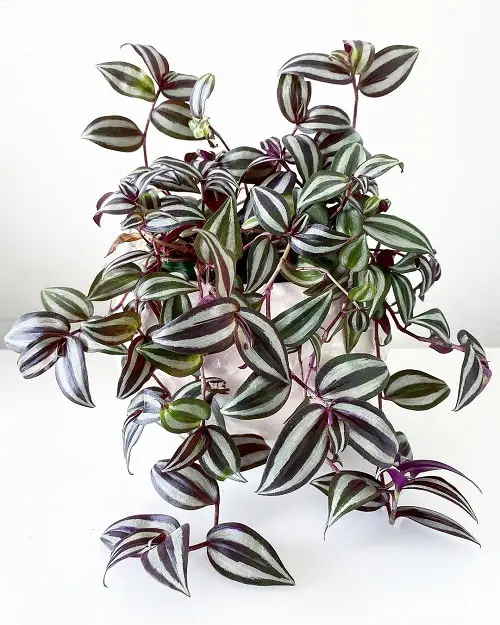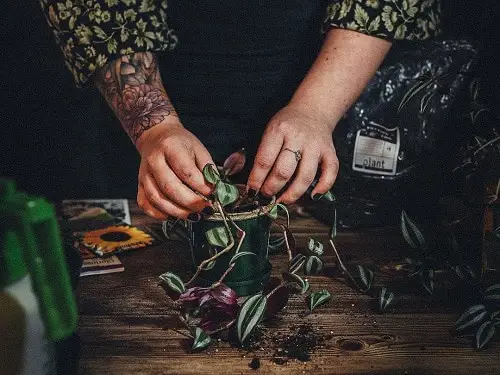If you are looking for the best tips on Wandering Jew Care, then you are at the right place! Learn everything in detail including the propagation.
Wandering Jew is a popular indoor/outdoor plant with purple leaves, stems, and blooms. The name comes from the plants’ trailing nature! Here’s all you need to know about the right Wandering Jew Care.
Here are the best types of Wandering Jew plants you can grow
Propagating Wandering Jew

Propagation can be done at any time of the year by pinching off a 3-4 inches long stem and putting the cut end in a glass of water or soil. Place the cutting in a warm, bright location away from direct sunlight. Change the water every 3-4 days. If you are growing it in soil, keep the soil moist. Avoid overwatering,
In 7-10 days, you will see new roots developing on the cut end of the stem. Wait 1-2 weeks to allow a strong root system to develop then plant it in a container filled with potting soil. The new plant can be planted directly into outdoor soil in spring or summer!
Check out our article on propagating wandering jew in water here
Best Types of Wandering Jews

- Tradescantia sillamontana: The plant stays compact and looks great with green foliage covered in a fine layer of hair.
- Tradescantia spathacea: Also popular as Moses-in-a-basket, it is a beautiful tabletop plant with spiral-shaped dark green leaves.
- Tradescantia longipes: This plant looks awesome in gardens with its three-petaled blue flowers.
- Tradescantia fluminensis: You can grow it both indoors and outdoors with ease. It grows stunning triangular white flowers.
Wandering Jew Care

Location
Wandering Jew will be at its deepest shade of purple when it is located in an area with bright indirect sunlight. It will grow well in a sunny location (outdoors or indoors) if it has some shade during the day. Just keep it safe from the harsh afternoon sun exposure.
Soil
This hardy plant is not too picky about the soil conditions, but it does not like soggy soil or hard clay. Use standard potting soil when growing in a container and add compost when planting it outdoors.
Watering
It grows best when the soil is kept consistently moist. The best part is, the plant can also tolerate drought as well! However, avoid overwatering and keep an eye on the topsoil for moisture.
If it is being grown indoors as a houseplant, mist the plant during the winter and water the soil sparingly. The dry air indoors caused by heat will quickly dry the plant and misting it every few days will keep it hydrated and thriving.
Fertilizing
Use an all-purpose, half strength, water-soluble fertilizer, once a month, during the growing period. Once the plant attains good growth, it will thrive happily without feeding.
Pruning
Prune the plant occasionally to encourage its growth. Pinch back some of the long, vining tendrils from time to time. You can also snip some of the stems to give the plant a uniform shape.
If you want to make the plant look fuller, cut the stems and put them in the soil of the same pot. It will make the plant multiply – making it look bushier.


